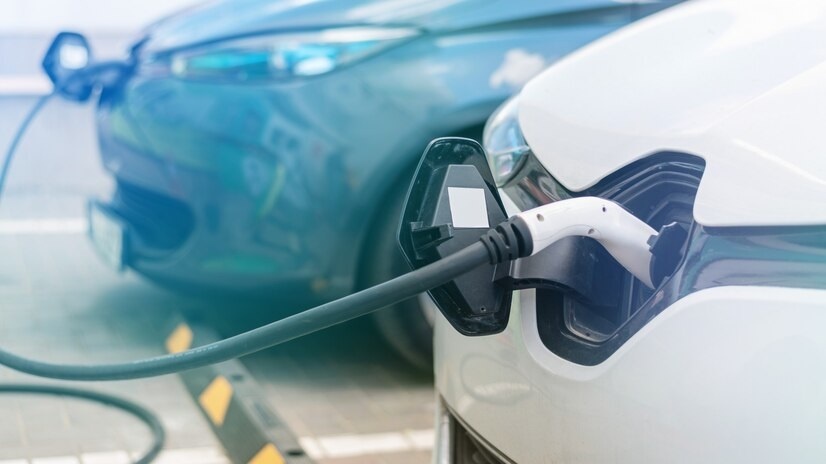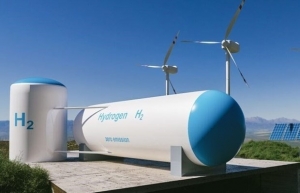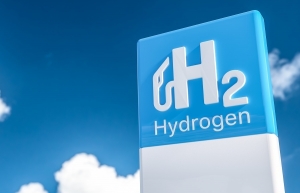Capabilities within reach for Vietnam to develop its hydrogen economy
The November submission to the government for approval by the Ministry of Industry and Trade (MoIT) was a strategy for the production of hydrogen energy through 2023, with an overarching vision to 2050. Vietnam’s strategic objective is to generate 100,000-500,000 metric tonnes of hydrogen by 2030, with further growth projected to reach 10-20 million tonnes by 2050.
This corresponds to an estimated 5-10 per cent of the country’s domestic energy demand. The primary sectors for which hydrogen is designed and utilised are power generation, transportation, hydrocarbon refining, fertiliser, metallurgical, and cement manufacturing.
 |
| Capabilities within reach for Vietnam to develop its hydrogen economy, illustration photo/ Source: freepik.com |
Hydrogen development receives attention from the government. In his address at a conference on hydrogen development on November 22, Tran Thanh Tung, deputy director of the Oil, Gas, and Coal Department under the MoIT discussed renewable power sources, new energy production inputs, and “unlimited development” to meet domestic and international demands while ensuring energy security, economic efficiency, and national security.
“Vietnam is adhering to a pattern of firmly expanding renewable energy sources that generate hydrogen for domestic and export needs,” Tung said.
Vietnam’s energy system is undergoing a fundamental source structure transformation, shifting gradually from fossil fuel sources to renewable energy sources, he added.
“The pure hydrogen ecosystem, which operates on renewable energy sources, is anticipated to generate 40,000-50,000 jobs on the domestic market and contribute between $40-45 billion to annual GDP, according to new calculations from the Ministry of Planning and Investment,” Tung said.
The hydrogen issue arose in Vietnam after renewable energy was listed as a breakthrough for the country’s Power Development Plan VIII, approved earlier this year. The objective is to elevate the proportion to 47 per cent by 2030 and further increase it to 67.5-71.5 per cent by 2050, contingent upon partners fully and substantially implementing the commitments of the Just Energy Transition Partnership.
This outcome will assist Vietnam in reducing electricity generation-related greenhouse gas emissions from approximately 204-254 million tonnes in 2030 to 27-31 million tonnes in 2050. However, currently, hydrogen energy is not a top priority in Vietnam’s policies. “The Vietnamese government has not yet issued a specialised plan for hydrogen; policy frameworks and support mechanisms for the hydrogen industry remain dispersed across various plans, devoid of synchronisation and consistency,” said energy director Nguyen Van Phong.
Vietnam handles hydrogen gas as an industrial gas. There is neither a ministry responsible for hydrogen nor a specialised legal framework for hydrogen as an energy subsector. At present, Vietnam’s primary product is grey hydrogen, which it produces at a capacity of approximately 500,000 tonnes annually for the oil, gas, and fertiliser industries, he added.
Vietnam is positioned to develop hydrogen as it becomes one of the foremost nations in Southeast Asia in the development of renewable energy. As a result, there is a growing demand for research and development into hydrogen.
Renewable energy sources accounted for 13.5 per cent of total energy production in the first 10 months of 2023, reaching 31.58 billion kWh; solar power alone accounted for 22.35 billion kWh, and wind power for 8.52 billion kWh, according to Vietnam Electricity.
In March this year, Green Solutions Group initiated the construction of Vietnam’s inaugural green hydrogen production facility in the Mekong Delta province of Tra Vinh. The facility is designed to have an annual capacity of 24,000 tonnes of hydrogen and 195,000 tonnes of oxygen. Operation of the factory is anticipated to commence in the next few months.
Vietnam is capable of developing into an economy based on hydrogen. Dr. David Jacobs, managing director of International Energy Transition GmbH, advised Vietnam to prioritise easily implementable objectives in order to reduce the likelihood that hydrogen will have to contend with less expensive alternatives for reducing carbon emissions.
“Vietnam should allocate its investments in sectors lacking the necessary emission reduction tech to substitute hydrogen or that are already utilising hydrogen gas in their operations, including oil refineries engaged in desulfurisation and fertiliser production,” Jacobs said.
European and domestic researchers agree that to advance the hydrogen industry, Vietnam must expeditiously finalise three fundamental components. Prior to anything else, it is critical to conduct research and development in order to ascertain potential use cases, decarbonisation potential, efficiency improvements, and cost reductions for green hydrogen production technologies. This is especially true in Vietnam, where green ammonia and green hydrogen are required in sectors such as transportation, steel, and chemicals, Jacobs explained.
Furthermore, the formulation of green hydrogen necessitates a well-defined policy and regulatory structure, as well as collaborative endeavours among academia, business, government, and civil society to facilitate the shift away from petroleum fuel-derived raw materials. Thirdly, it is necessary to develop infrastructure required to produce, store, and distribute renewable hydrogen securely.
| A hydropower development programme from the International Energy Agency projects that the green hydrogen market, which was valued at $676 million in 2022, will boom to $7.3 billion by 2027. As per a report presented to the government in support of the Power Development Plan VIII implementation for the decade, Vietnam requires an estimated annual investment of $11.3-13.5 billion in power source and transmission projects. Power source and grid initiatives under the plan will receive their total capital from public investment sources or alternative capital sources. Large power sources will be categorised according to their type, region, and anticipated operational duration. |
 | Vietnam hopes to promote energy transition from green hydrogen The green hydrogen ecosystem based on renewable energy is expected to contribute $40-$45 billion to Vietnam's GDP each year, according to the National Green Hydrogen Summit on October 28. |
 | Suitable policies, mechanisms needed for green hydrogen development Vietnam needs to promptly adopt appropriate policies and mechanisms to build infrastructure and value chains related to hydrogen, experts recommended at the National Green Hydrogen Summit: Energy Transition and Development of Green Hydrogen Industry in Vietnam on October 28 at the National Innovation Centre (NIC) at the Hanoi-based Hoa Lac Hi-tech Park. |
 | Green hydrogen market pursued Promoting a green hydrogen ecosystem has the potential to annually contribute over $40 billion to GDP and generate over 40,000 jobs for the Vietnamese economy. |
What the stars mean:
★ Poor ★ ★ Promising ★★★ Good ★★★★ Very good ★★★★★ Exceptional
Related Contents
Latest News
More News
- Heavy industries set for pilot greenhouse gas quotas (December 25, 2025 | 10:00)
- Swedfund invests in MSME growth and climate action in Vietnam (December 19, 2025 | 11:42)
- GreenYellow brings solar energy to light up remote schools in Tuyen Quang province (December 19, 2025 | 08:00)
- Charge+, Grab partner to develop EV charging network in Vietnam (December 18, 2025 | 17:11)
- Linking sci-tech and innovation to Vietnam’s net-zero future (December 18, 2025 | 14:31)
- Driving double-digit growth through green and circular transformation in Vietnam (December 17, 2025 | 09:00)
- Standard Chartered and ACCA deepen collaboration to develop Vietnam’s talent for a sustainable future (December 15, 2025 | 18:18)
- Schaeffler reports strong early output from Dong Nai solar project (December 12, 2025 | 15:16)
- Forestry conference highlights biodiversity and sustainability goals (December 09, 2025 | 13:35)
- Home Credit honoured among top 10 sustainable companies in trade and services (December 09, 2025 | 12:18)

 Tag:
Tag:




















 Mobile Version
Mobile Version